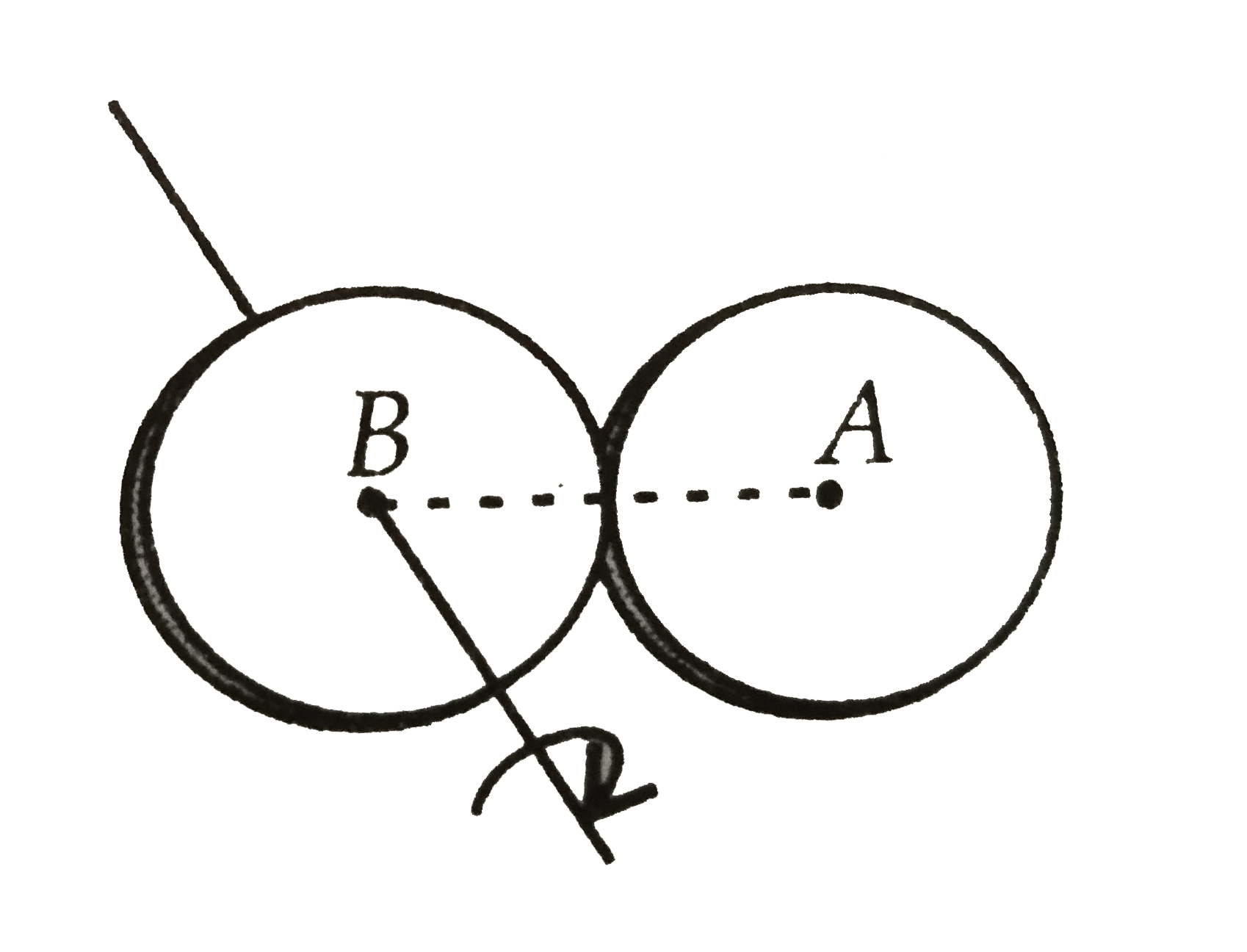Two lenses of same mass and same radius are given. One is convex and other is concave. Which one will have greater moment of inertia, when rotating about an axis perpendicular to the plane and passing through the centre ?
To determine which lens has a greater moment of inertia when rotating about an axis perpendicular to the plane and passing through the center, we can analyze the distribution of mass in both lenses.
1. Understanding Moment of Inertia:
The moment of inertia (I) of an object is given by the formula:
I=∑mir2i
where mi is the mass of a small element and ri is the distance of that mass from the axis of rotation.
2. Comparing the Lenses:
- The convex lens is thicker in the middle and thinner at the edges. This means that more of its mass is concentrated closer to the center.
- The concave lens, on the other hand, is thinner in the middle and thicker at the edges, which means that more of its mass is distributed further away from the center.
3. Analyzing Mass Distribution:
- In the convex lens, since most of the mass is closer to the axis of rotation, the effective distance ri for these mass elements is smaller, leading to a smaller contribution to the moment of inertia.
- In the concave lens, a significant portion of the mass is located further away from the axis of rotation, resulting in a larger contribution to the moment of inertia.
4. Conclusion:
Given that the mass and radius of both lenses are the same, the lens with the greater moment of inertia will be the one with more mass distributed further from the axis. Therefore, the concave lens will have a greater moment of inertia compared to the convex lens.
Final Answer:
The concave lens will have a greater moment of inertia than the convex lens.
---
The moment of inertia (I) of an object is given by the formula:
I=∑mir2i
where mi is the mass of a small element and ri is the distance of that mass from the axis of rotation.
- The convex lens is thicker in the middle and thinner at the edges. This means that more of its mass is concentrated closer to the center.
- The concave lens, on the other hand, is thinner in the middle and thicker at the edges, which means that more of its mass is distributed further away from the center.
- In the convex lens, since most of the mass is closer to the axis of rotation, the effective distance ri for these mass elements is smaller, leading to a smaller contribution to the moment of inertia.
- In the concave lens, a significant portion of the mass is located further away from the axis of rotation, resulting in a larger contribution to the moment of inertia.
Given that the mass and radius of both lenses are the same, the lens with the greater moment of inertia will be the one with more mass distributed further from the axis. Therefore, the concave lens will have a greater moment of inertia compared to the convex lens.
The concave lens will have a greater moment of inertia than the convex lens.
Topper's Solved these Questions
- System of particles & rotational MotionBOOK - SL ARORACHAPTER - System of particles & rotational MotionEXERCISE - EXERCISE
353 Videos
- ROTATIONAL MOTIONBOOK - SL ARORACHAPTER - ROTATIONAL MOTIONEXERCISE - Problem for self practice
90 Videos
- Thermal Properties of MatterBOOK - SL ARORACHAPTER - Thermal Properties of MatterEXERCISE - Exercise
449 Videos
Similar Questions
There are two spheres of same mass and same radius, one is solid and other is hollow. Which of them has a larger moment of inertia about its dimeter ?
View SolutionCalculate the moment of inertia of a rod of mass M, and length l about an axis perpendicular to it passing through one of its ends.
View Solution
Knowledge Check
What is the ratio of the moments of inertia of two rings radii r and nr about an axis perpendicular to their plane and passing through their centres?
A1:n2B1:nC1:2nDn2:1The moment of inertia of NaCl molecule with bond length r about an axis perpendicular to the bond and passing through the centre of mass is
A(mNa+mCI)r2BmNa+mCImNa−mCIr2CmNa×mCImNa+mCIrDmNa+mCImNa−mCIr2Moment of inertia of a uniform circular disc about a diameter is I. Its moment of inertia about an axis perpendicular to its plane and passing through a point on its rim will be.
A6 IB4 IC2 ID8 I
Two lenses, one convex and other concave, are of same mass and same radius. Which will have greater moment of inertia?
View SolutionTwo lenses one convex and one concave are of same mass and same radius. Which will have greater moment of inertia about its pole?
View SolutionConsider a uniform square plate of of side and mass m. The moment of inertia of this plate about an axis perpendicular to its plane and passing through one of its corners is -
View SolutionConsider a uniform square plate of side 'a' and mass 'm'. The moment of inertia of this plate about an axis perpendicular to its plane and passing through one of its corners is
View SolutionTwo thin discs each of mass M and radius r metre are attached to form a rigid body as shown in figure. The rotational inertia of this body about an axis perpendicular to the plane of disc B and passing through its centre is

View Solution
